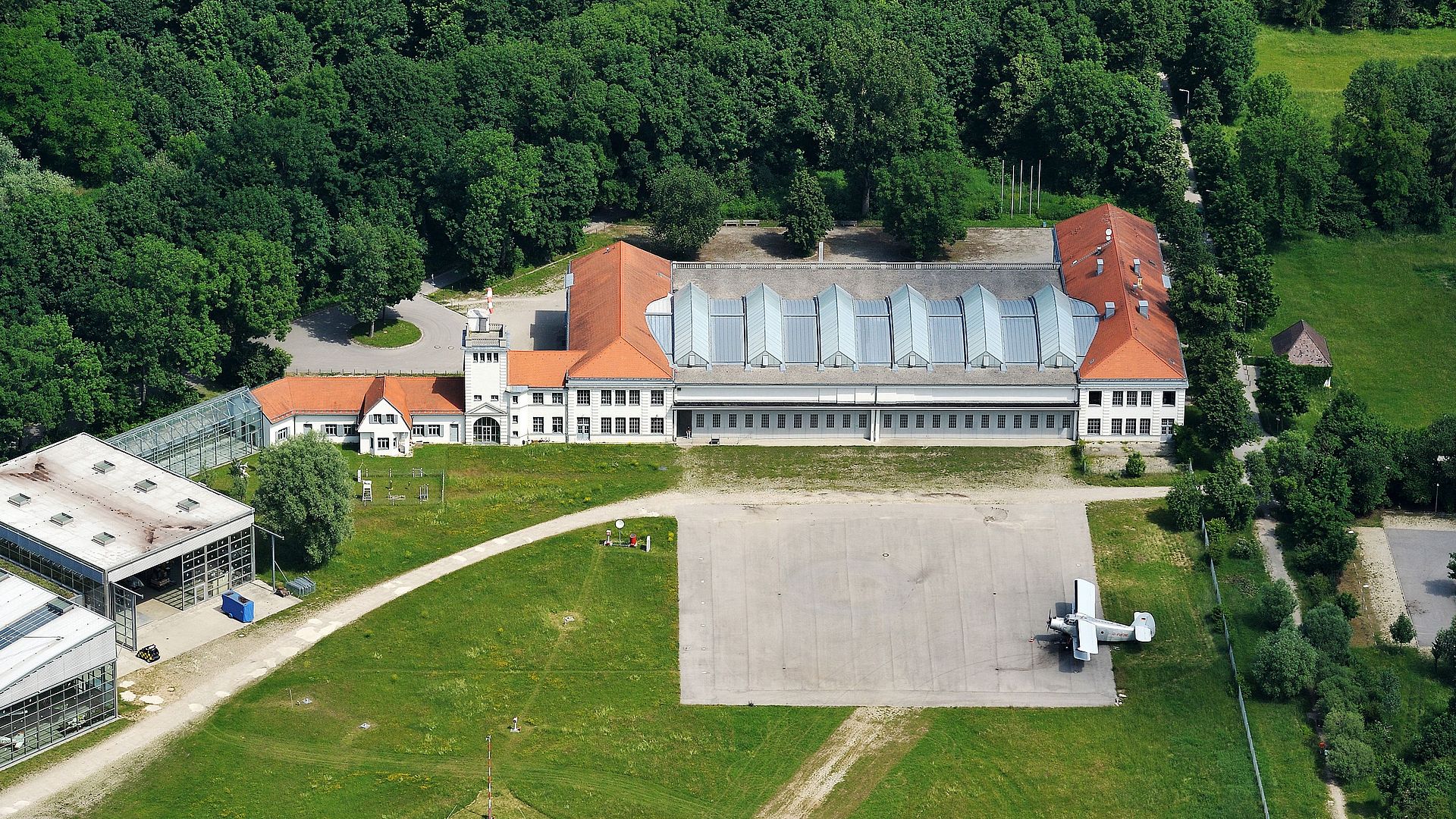
Photo: Michael Häfner
Historic Airfield Buildings
In addition to the modern exhibition hall, two historic buildings from the early days of Schleissheim airfield form the core of today’s museum.
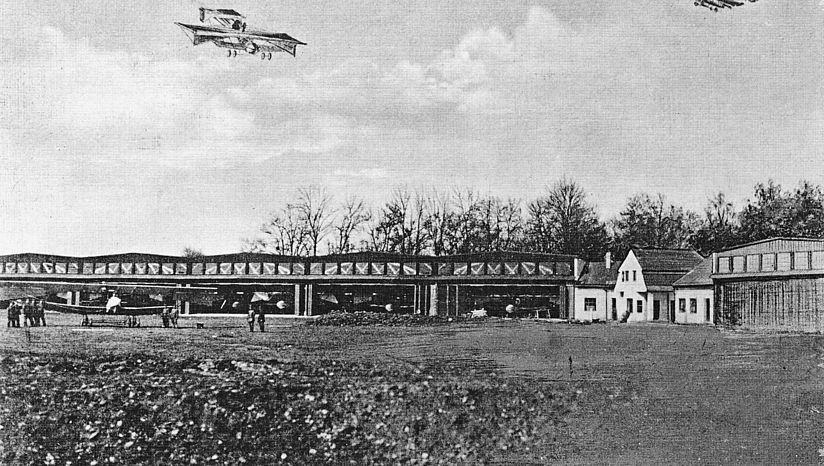
The Kommandantur (command station), located between two wooden aircraft hangars, on a postcard from around 1913. Photo: Deutsches Museum
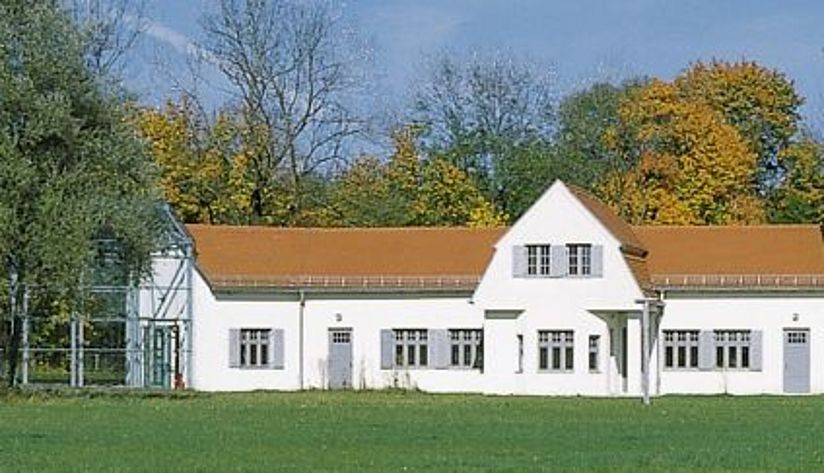
The Kommandantur today. Photo: Deutsches Museum
The Kommandantur
The “Kommandantur” (command station) was the first permanent building of the airfield, built in 1912. It was the main´ administrative building and also housed numerous workshops. and was flanked by two wooden hangars.
Today, the building contains an exhibition on the history of Schleissheim Airfield and the Flugwerft.
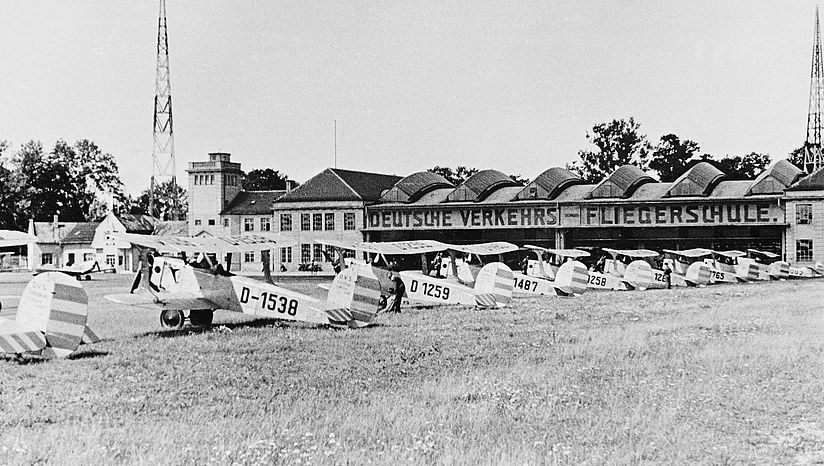
The Flugwerft around 1930, with Udet U 12 Flamingo training aircraft in the foreground. Photo: Deutsches Museum
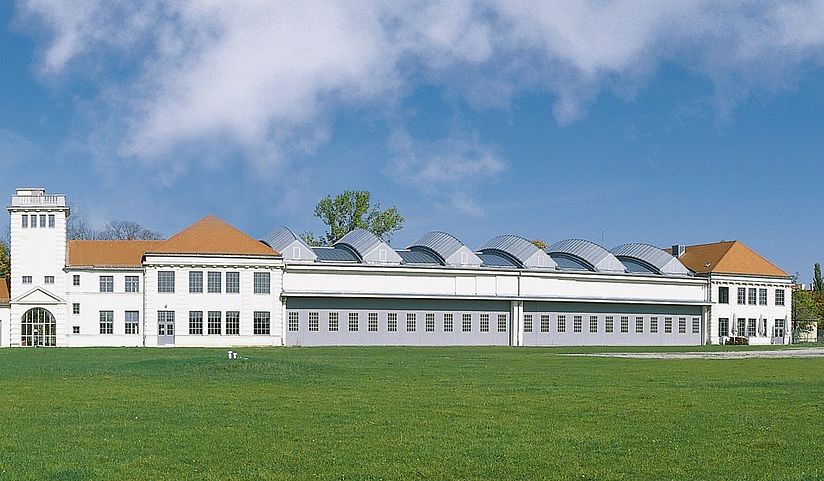
The Flugwerft today. Photo: Deutsches Museum
The Flugwerft building
The Royal Bavarian Flying Corps began construction of the Flugwerft in 1918, but it was not until the mid-1920s that it was put into operation by the Deutsche Verkehrsfliegerschule (German Air Transport School). The central building is the hangar, where aircraft were stored and repaired. The individual specialised workshops were grouped together in the hangar on two levels. The museum was named using the historical word “Flugwerft”.
Today, the hangar hall is used for exhibiting aircraft, while the former workshop rooms are used for events, special exhibitions and as offices.
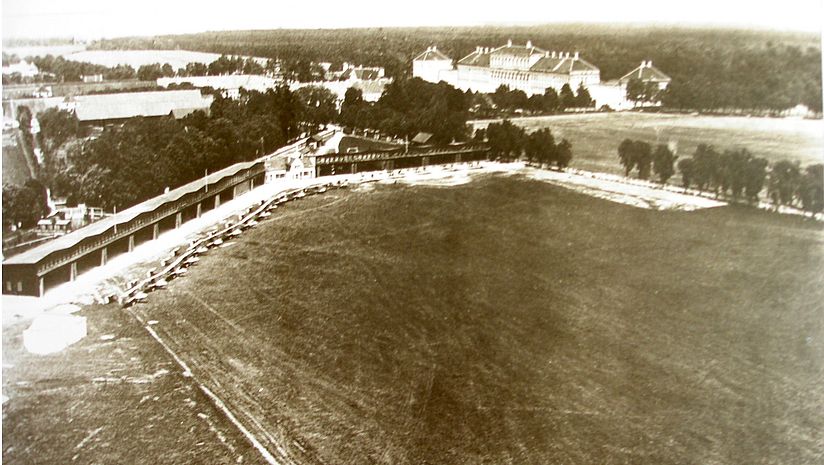
The first buildings in the airfield, with Otto biplanes lined up in front of them, around 1913. Photo: Deutsches Museum
Foundation, 1912
The area south of Schleissheim Palace is designated as the location for the newly founded Royal Bavarian Flying Corps.
From 1912, the first buildings are constructed for flight operations. The “Kommandantur” (command station), which is part of the museum today, is situated between two wooden aircraft hangars.
Aircraft hangars were built on the northern edge of the airfield, the barracks on the left, around 1920. Photo: Deutsches Museum
World War I, 1914–1918
During World War I, Schleissheim serves as the location of an aviation reserve unit. During the war, flying personnel, pilots, observers and gunners are trained here and flying units are created to be sent to the front. Numerous hangars, accommodation and buildings used for training are added to the airfield. The aircraft storage building, now the heart of today’s museum, was built towards the end of the war.
Used by the Air Transport School, around 1930. Photo: Deutsches Museum
Weimar Republic, 1922–1933
Airlines begin operating scheduled mail and passenger flights from Schleissheim. However, Oberwiesenfeld (today's Olympic grounds), which is closer to the city, is developed into Munich's airport. Starting in 1927, airline pilots are trained at the German Air Transport School in Schleissheim.
Heavy fighter crews and other pilots were trained here during the Second World War; a Messerschmitt Me 110 can be seen in the background. Photo: Deutsches Museum
Third Reich and Second World War, 1933–1945
Following the National Socialists’ seizure of power over the country, Schleißheim was quickly expanded into an air base for the Luftwaffe as part of the rearmament process and preparations for war. Schleissheim continues to be used for training: fighter pilots and heavy fighter crews receive instruction, and night fighter training begins in 1943.
Reconnaissance photo taken on 25 April 1945 following an earlier bombing raid. Photo: Deutsches Museum
End of the War, 1945
Several heavy air raids cause considerable destruction in 1944 and claim many victims, among them members of the civilian population.
US Army Sikorsky H-34 helicopter in front of the Flugwerft, around 1959. Photo: Deutsches Museum
Post-1945 Period
Following the end of the war, the US Army occupies the site. American transport helicopters are stationed at the “Schleissheim Army Air Base” until 1968. German army pilots also begin to use the airfield from 1958, following the creation of the Bundeswehr (German Armed Forces). They do not leave the airfield until 1981, marking the end of military flight operations at Schleissheim. Today, the airfield is used by the German Federal Police’s Fliegerstaffel Oberschleissheim (flight squadron) and by several aviation clubs.
The partially collapsed roof of the Flugwerft, in a photo from 1988. Photo: Deutsches Museum
Discussions on the Creation of an Aviation Museum
Following the end of military operations at the airfield in 1981, the historic buildings, which date from the early days of aviation, fall into disrepair. However, it is possible to preserve them, and after restoration, they form the core of the first external site of the Deutsches Museum.
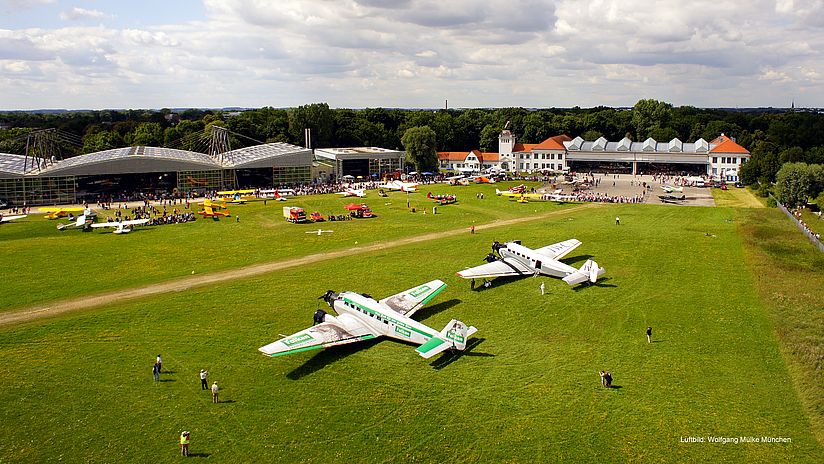
2012 fly-in for the 20th anniversary of Flugwerft Schleißheim. Photo: Wolfgang Mülke
Opening of the Aviation Museum in 1992
Flugwerft Schleißheim opened in September 1992 as a museum for aviation and astronautics. A modern exhibition hall adjoining the historic buildings provides an exhibition area of 8,000 sqm. The exhibits can now be restored in an aircraft workshop in a separate hall. The museum is connected to the rest of the airfield via a taxiway, and aircraft can taxi directly in front of the museum.
